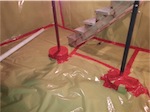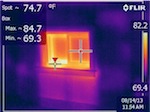Choosing the Right System
Choosing a ventilation system requires balancing cost and performance. For example, forced-air supply ventilation is popular among tract home builders because it’s very inexpensive to install; however, it’s expensive to operate a standard forced-air fan for ventilation. On the other hand, balanced heat-recovery systems are expensive to install but save on operating costs. The more severe the climate, the greater the operating cost savings with heat-recovery ventilation. Single-port exhaust systems have low installation and operating costs, but often do not distribute air as well as ducted systems. Multi-port supply and multi-port exhaust ventilation have moderate installation and low operating costs.
At Lawrence Berkeley National Laboratory, we devised a ranking system in order to compare the cost and effectiveness of various residential ventilation systems. Our results were intended for production home builders, whose decisions are driven primarily by lowest first cost, but the information provided is useful to any builder or homeowner trying to select a ventilation system.
We evaluated nine ventilation strategies, including three types of exhaust systems, three types of supply systems, and three types of balanced systems. These nine systems were then scored and ranked for four different climates (cold, mixed, hot-humid, and hot-arid, represented by Boston, Washington, D.C., Houston, and Phoenix). Scores were based on three criteria: installation cost, long-term operating costs, and effectiveness of ventilation provided by each system. The lower the costs and the more effective the ventilation, the higher the score. Our criteria for effectiveness included air distribution and indoor air pressure, but they did not include air filtration or source of air.
In all four climates, the ventilation system with the highest score was multiport supply. However, since positive indoor pressure can cause moisture problems in exterior walls in cold climates, we recommend that in cold climates, a multi-port supply system be balanced by single-port exhaust ventilation, and that heat recovery ventilation be offered to home buyers as an optional upgrade. Exhaust systems (which usually are not ducted) are as affordable as, but less effective than, supply systems (which usually are ducted). Balanced HRVs and ERVs are most effective, but their high installation cost is difficult to justify, at least in production homes. The report, entitled Recommended Ventilation Strategies for Energy-Efficient Production Homes, is available on-line at http://enduse.lbl.gov/Projects/ESVentila tion.html.
Judy Roberson is now a residential building science and ventilation consultant. Her email is JARoberson@mac.com
This article originally appeared in the Sept 2000 issue of the Journal of Light Construction, and is reprinted here with the author’s permission.






